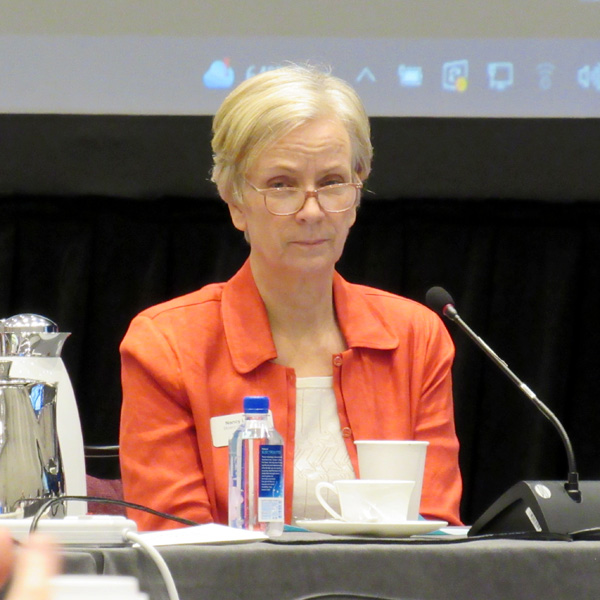ORLANDO, Fla. — MISO said it’s making headway on three transmission planning initiatives, including its 2021 Transmission Expansion Plan (MTEP), long-range transmission portfolio and a joint study with SPP intended to build transmission that can bring more generation online.
On Thursday, the Board of Directors greenlighted 335 new projects worth $3 billion, about a 20% reduction from 2020’s transmission package. (See MISO Tx Expansion Plans Proceeds to Board Vote.)
Aubrey Johnson, MISO’s executive director of system planning, has said the decrease is largely driven by Central planning region transmission owners submitting fewer projects this year. He said projects are scattered evenly across the footprint except for the West region, which continues to experience fewer projects.
“There’s not really any sexy in this [MTEP] … but this is foundational work that needs to be done,” director Mark Johnson said during the board’s meeting.
MISO says that $28.2 billion worth of transmission facilities have gone into service since the first MTEP cycle in 2003. Another $12 billion in projects will be in service by 2024.
Johnson said the billions in upcoming projects illustrate how long it takes to get transmission built. He also said projects from as far back as the 2008 and 2010 MTEPs have yet to be energized.
“Our team is going back to understand better what is going on with these projects,” Johnson said during a Tuesday System Planning Committee (SPC) of the board. He said most projects have been delayed because of budget or design changes.
This year, some members asked that MISO include transmission’s ability to withstand climate change or support clean energy goals in future MTEP planning.
The Environmental Sector asked staff to create “a more inclusive and holistic” transmission planning process that will support the fuel mix transition from fossil plants to renewable resources.
WPPI Energy asked for transfer analyses to SPP and the Tennessee Valley Authority and requested the RTO consider better connections between southern Illinois and southern Indiana.
Johnson has said MISO already considers extreme weather events in planning and it will dial up those efforts.
“We’re trying to expand that further to drive operational insights,” he told the board’s SPC in September.
WPPI Energy’s Steve Leovy said then that MISO can “reasonably expect” repeats of polar vortices that carry load-shed risk. He said he was worried the grid operator’s planning wasn’t doing enough to prevent a repeat of reliability breakdowns during cold snaps.
Midwest Bent for Long-range Projects
MISO Vice President of System Planning Jennifer Curran said staff is still putting together business cases and reliability and engineering analyses for the dozen or so Midwestern projects that could be recommended in the first cycle of long-range transmission projects.
Curran said the RTO is focused on the footprint’s Midwestern portion first because that region is undergoing a much more aggressive clean energy transition than MISO South.
“The needs are much more imminent. In some cases, they are here today,” Curran told the SPC Tuesday. “We operate and plan as one RTO while addressing the need for speed in the North and Central regions.”
She said the regions remain fairly independent of one another partially because of the transmission constraint between the two. Curran acknowledged that MISO could recommend a long-range project to expand its North-South transmission interface, unifying the RTO and widening its benefits spread.
“It’s a little bit chicken and egg,” she said.
 Nancy Lange, MISO director | © RTO Insider LLC
Nancy Lange, MISO director | © RTO Insider LLC
Director Nancy Lange asked how MISO can be sure that project benefits will be contained to the subregion bearing its costs.
“It’s taken me a while to wrap my head around that,” Lange said.
Curran said while there may be some transmission benefits enjoyed by MISO South from the Midwest, they’re inconsequential.
MISO President Clair Moeller said the North-South subregional limit’s energy flow has less transfer capability than the connection between Minnesota and Wisconsin.
“It’s a severe constraint,” he said.
Clean Grid Alliance’s Beth Soholt urged the grid operator to propose projects in a timely manner, noting that utilities and state commissioners are relying on new transmission to make new resource decisions and meet decarbonization goals.
“We were looking forward to seeing [the first] tranche in December,” she said.
MISO originally planned to recommend long-range projects this month as part of MTEP 21. Now, it says it will present a list of projects for approval to the board in June. Though six months tardy, those projects will still be considered under MTEP 21’s banner.
Joint Interconnection Solutions at $2B
SPP and MISO are finalizing a nearly $2 billion portfolio of 345-kV interregional projects that could resolve most constraints along their seam.
The proposals are the result of the grid operators’ joint targeted interconnection queue study, designed to ease their crowded interconnection queues.
MISO still must discern how the projects would interact with any proposed projects under its long-range transmission plan.
MISO executives predicted disagreements over a cost allocation that could assign bills for both generation and load. SPP’s Antoine Lucas said costs could be recovered from new generators as they exit either of the RTOs’ interconnection queues. (See MISO, SPP: Economics Secondary in Joint IC Planning.)
The seams neighbors plan to hold cost-allocation talks on the projects next year. The RTOs have said they would bring projects to their respective boards for approval once they decide on cost allocation.
“I recognize we still have a lot of work to do … but this will hopefully benefit those along the MISO-SPP seam,” Johnson said.



